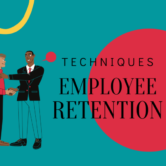What Is the Cost of Employee Turnover? A Comprehensive Guide

No matter how remarkable your product or service offering is, the success of your business ultimately depends on the people behind it. Hiring and retaining top talent is critical for sustained success. However, despite efforts to keep employees engaged, turnover remains a significant challenge. According to the Bureau of Labor Statistics, 3.8 million people voluntarily quit their jobs in April 2023 alone. The cost of employee turnover can deeply impact your bottom line.
In this guide, we’ll break down the average cost of turnover per employee, explore hidden costs, share actionable strategies to reduce turnover and improve employee retention, and provide expert insights on both direct and indirect turnover-related expenses.
What Is Employee Turnover?
Employee turnover refers to the rate at which employees leave your organization. It is categorized into two main types:
- Voluntary Turnover: Employees willingly leave for better opportunities, dissatisfaction, or personal reasons.
- Involuntary Turnover: Employees are terminated due to reasons such as poor performance, layoffs, or company restructuring.
While involuntary turnover can be minimized with effective hiring practices, voluntary turnover is more complex. Understanding why employees leave and addressing those factors is key to reducing turnover. Effective employee engagement and organizational culture play vital roles in minimizing voluntary turnover.
What Is the Cost of Losing an Employee?
Losing an employee, especially a high-performing one, is not only a blow to team morale but also to your business finances. The average cost of turnover per employee varies by role and industry, but studies show that employee turnover can cost companies 1.5 to 2 times the employee’s annual salary. Here’s a breakdown of typical turnover costs by employee level:
- Hourly Workers: $1,500 per employee
- Technical Positions: 100-150% of the employee’s annual salary
- C-Suite Executives: Up to 213% of their salary
Beyond the direct financial costs, employee turnover also negatively impacts productivity, morale, and institutional knowledge. These indirect costs often make turnover even more damaging than the direct expenses.
The Hidden Costs of Employee Turnover
While direct costs such as recruitment and training are easier to quantify, there are hidden costs that can be even more detrimental:
- Lost Productivity: When an employee leaves, their responsibilities are left behind, stalling projects and overwhelming remaining staff.
- Depleted Morale: The departure of employees, especially high performers, can create uncertainty and reduce morale.
- Loss of Institutional Knowledge: Valuable expertise and company-specific knowledge are lost with every departing employee.
- Increased Turnover Risk: If employees are overburdened, they may also decide to leave, perpetuating a cycle of turnover.
These hidden costs often go uncalculated but can significantly affect your organization’s performance and profitability. Addressing employee satisfaction and promoting a positive work culture can reduce these long-term impacts.
How to Calculate the Cost of Employee Turnover
To calculate the cost of employee turnover, businesses need to consider both direct and indirect factors. One of the easiest ways to calculate turnover is by using the turnover rate formula:
Turnover Rate = (Number of Employees Who Left ÷ Average Number of Employees) × 100
For example, if 10 employees left in a year and your average number of employees was 100, your turnover rate would be 10%.
By multiplying this turnover rate with the average cost of turnover per employee, you can estimate the total cost of employee turnover to your business. Additionally, HR analytics tools can help streamline this process by tracking turnover rates and related expenses.
Industry-Specific Turnover Costs
Employee turnover impacts different industries in various ways. For instance, healthcare, technology, and retail sectors experience higher turnover rates than industries like finance or education. Understanding these variations helps businesses allocate resources more effectively to address turnover in specific departments. The cost of turnover can also be influenced by company size and geography, with smaller businesses facing unique challenges.
Employee Retention Strategies to Reduce Turnover
To combat high turnover costs, businesses should implement effective retention strategies. Here are some actionable tips to reduce employee turnover:
- Create Growth Opportunities: Employees value career development. Offering regular training, mentoring, and leadership programs is essential for employee growth and long-term retention. Clearly communicate advancement opportunities within your organization.
- Recognize and Reward Employees: Employee recognition plays a critical role in job satisfaction. Implement formal recognition programs, such as employee-of-the-month awards or peer shoutouts, to foster a positive work environment.
- Establish a Feedback Process: Create avenues for employees to voice concerns and share feedback. Conduct stay interviews to understand their needs and address issues before they lead to turnover.
- Offer Competitive Compensation and Benefits: Ensure your salary and benefits packages are competitive. Customize benefits according to employee preferences, such as offering healthcare benefits, remote work options, and wellness programs to enhance satisfaction.
- Conduct Exit Interviews: When an employee leaves, use exit interviews to gather candid feedback. This valuable information can help you identify the root causes of turnover and improve retention strategies in the future.
The Role of Organizational Culture in Retention
A positive organizational culture can significantly reduce turnover. By promoting an inclusive environment, fostering team collaboration, and encouraging work-life balance, companies can cultivate a culture that supports long-term employee satisfaction. Companies with strong cultures often see lower turnover rates, even in high-demand industries.
Legal and Compliance Considerations
Organizations should be mindful of legal implications when dealing with employee turnover. This includes understanding local labor laws, ensuring compliance with severance agreements, and maintaining proper documentation during the exit process. Failing to adhere to these can lead to costly legal battles and damage to your reputation.
Technological Solutions for Managing Turnover
Several HR technology platforms can help businesses monitor and address turnover more effectively. Employee engagement software, HR analytics tools, and turnover rate calculators are essential for making data-driven decisions and implementing proactive retention strategies.
Future Trends in Employee Turnover
As work environments evolve, so will turnover trends. The rise of remote work, the gig economy, and generational shifts in the workforce will influence turnover rates in the coming years. Understanding these emerging trends can help organizations stay ahead by adapting their retention strategies accordingly.
Conclusion: Reduce Turnover and Retain Top Talent
The cost of employee turnover is both a financial and operational challenge for organizations. By understanding its impact and implementing effective retention strategies, you can mitigate turnover costs, improve employee satisfaction, and drive your organization’s success. Start by creating growth opportunities, recognizing employees, fostering a feedback-rich environment, and building a strong organizational culture.
At HPWP Group, we specialize in helping businesses reduce turnover and retain top talent. Contact us today to learn more about our employee retention programs and resources.










